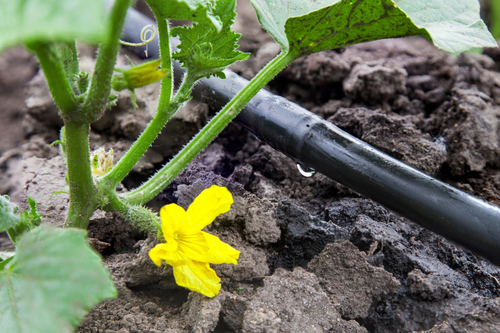How To Winterize Your Drip Irrigation System
Leaving a drip irrigation system in its natural state during the winter is a mistake. Be proactive and winterize your drip irrigation system with the methods outlined below. These winterization methods will safeguard your drip irrigation system, protecting your investment as well as your property. If you fail to properly winterize your drip irrigation system, the system’s valves, plastic fittings, poly pipe, filters, PVC pipe or layflat hoses might burst as a result of water freezing inside. Even the main water lines can be damaged if you fail to winterize. It will take an hour or less to winterize your system. Here is how to do it.

A Helpful Preventative Measure for Drip Irrigation Systems
One of the best ways to prevent freezing in your drip irrigation system is to install automatic drain valves. Position them at the lowest possible point within the system. Drain valves allow water within the line to drain out. Some experts also recommend running chlorine (2 PPM) into the system and flushing it out thoroughly for a comprehensive clean ahead of the winter.
The First Step
Begin by turning off the main water supply to the drip irrigation system. Do this the day before freezing weather arrives. Make sure that there is no water in the backflow device, filter, valves, drip hose, sprinklers, pipe and pressure regulator. Run the controller/timer through its regular watering cycle. This allows each valve to open. Water pressure is relieved from the valves as well as the main line. Let the lines drain.
If the spring-loaded drain valves toward the system’s end are not properly installed, the main line might not fully drain. In some instances, the ground is not completely flat or the drain valve is positioned toward the bottom of the system. If you have any doubt as to whether the main line is drained, make use of air pressure to fully flush out the system.
Drip Tubing/Micro Tubing
Start out by disconnecting the drip tubing with the filter assembly’s swivel adapter. Wrap this piece to the filter assembly so grime doesn’t reach the drip tubing. If your drip tubing is above ground, open each end to permit the draining of water. Lift the hose a couple feet at a time so water can drain out. Once the water drains, close the drip tubing ends.
Irrigation Valve Assemblies
If your system makes use of AC valves with a pressure regulator and filter or battery operated controllers, consider storing them inside a warm area during the cold months of the year. If you can easily remove the full assembly from the pipe, you can store this assembly unit all the way from the pressure regulator to the controller indoors for the winter. If separating the valve assembly or filter assembly is not feasible, loosen or remove the valve bonnet to ensure the water from the upper portion of the diaphragm and filter cap can drain.
How to Proceed Through the Duration of the Winter
Leave the system in the “off” position and fully drained throughout the duration of the winter. If you decide to water your plants, yard or other items on your property, use your hose. In most instances, there is ample moisture within the ground to sustain your greenery until spring.
We’re Here to Help With Everything Irrigation-Related
If you have any questions about how to winterize your drip irrigation system, reach out to our landscape maintenance company. We specialize in irrigation and water saving landscape design. Put your faith in our irrigation experts and we will improve the beauty, integrity and utility of your property. Contact us the experts for more information.
Tagged: DK Landscaping, Drip irrigation, Sonoma County
You can leave a response, or trackback from your own site. Back to Top
Leave a Reply





